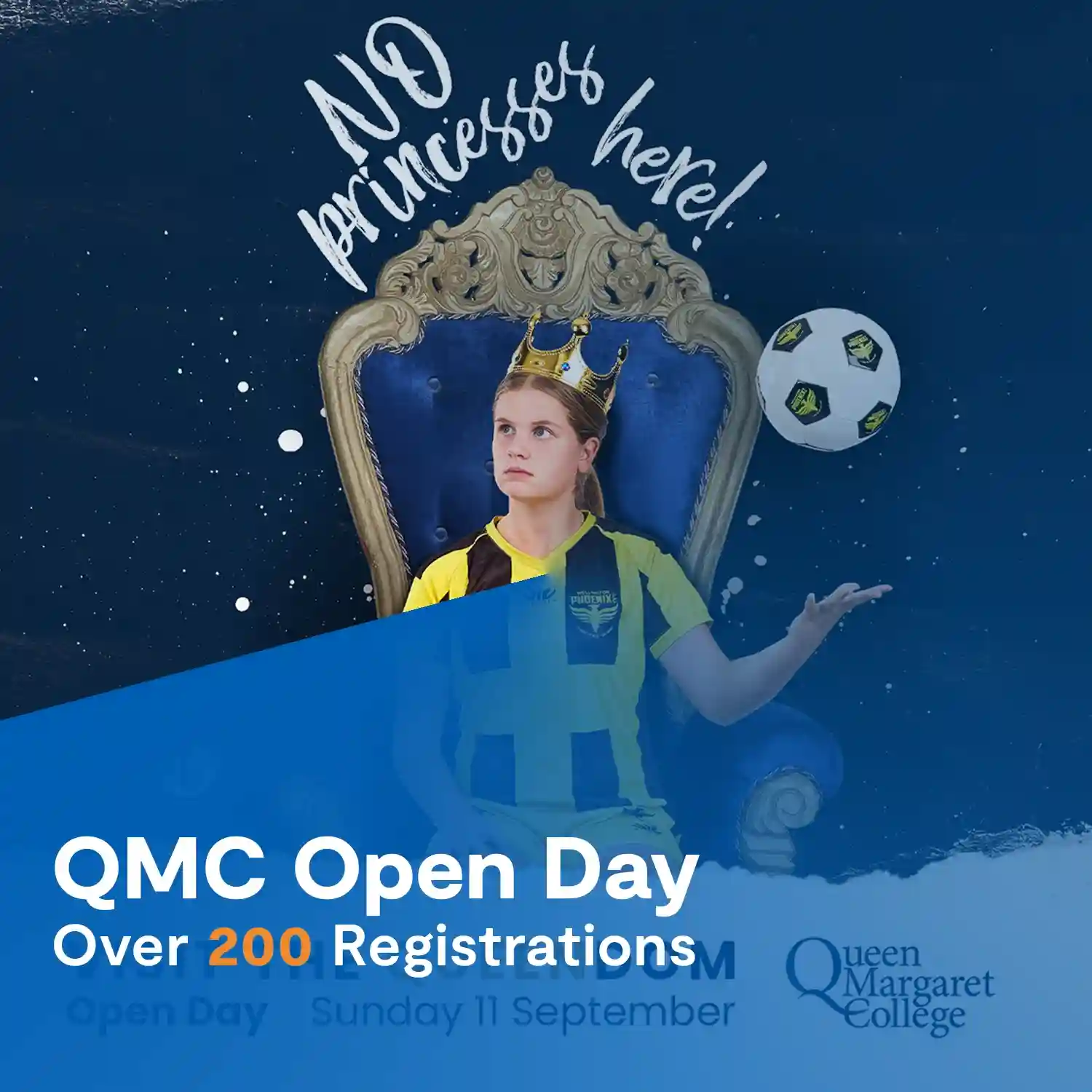Remember to join the discussion in the Marketing Mastery For Schools Facebook Group.
Managing a Marketing Department
Show Transcript
“Is it okay to let those posters that a teacher or administrative person has designed slip by if they don’t meet the branding guidelines? Or should we be really strict about people meeting the guidelines, do we insist on designing it ourselves, so that it meets our professional standard, that we’d like to present?”
This is a great question, and it actually fits into the bigger question of, well, how do we actually run our marketing department?
Every school’s marketing department is different, there are some small schools, that don’t actually have a marketing department, and maybe the business manager or principal does a few campaigns on the side. For others, you’re a solo marketer, covering a variety of roles, and for others, you have five or six or seven or eight people in your team. There is a lot of variation to cover, and a marketing department can be involved in everything from marketing, to fundraising and development, communications, and publications, such as yearbooks and magazines.
Some of you work with the enrollments team. You run events, you do photography, and you’re trying to build an alumni that is involved and active in your school. That’s a huge amount of work to do.
I remember when I first started in school’s marketing, back in 2011. I moved here from London. The marketing budget had already been spent for the year, and there was a huge need to grow, and a lot of work to be done.
I was left to my devices. I did everything from running around taking photographs, to producing the magazine, doing a weekly e-newsletter of communications to parents, updating them on events, running events, organising events, things like that.
I’ve designed websites; I’ve run Google Adwords, Facebook ads, done all the graphic design. It was an absolutely massive role and what you quickly learn is what your strengths are, and what your weaknesses are.
Delegating Tasks and Thinking Big Picture
If you’re a good leader, you’ll find ways to put more time into the areas where you’re strong, and you’ll delegate; you’ll find team to help you in areas that you aren’t so strong. So, if you’re running a marketing department, your job is to really be the filter for your team, to filter all the requests, all the feedback to your team, as you really keep them focused on achieving the goals that you’ve set out in your marketing plan.
As an experienced marketer I always want to free myself up to think big picture, to think strategy, to think vision, and to put all our time and effort into those big campaigns that are going to make a really big difference, for the long-term sustainable growth of our college, rather than getting stuck in the day to day.
I had an honest chat to my principal, and I said, “You know, I’ve got all these amazing marketing skills, but at the end of the day, I’m running around taking photographs of little preppies.” That’s great, and makes a great Facebook post that’s liked by 15 people, but strategically thinking, how am I impacting the long-term growth of our college?
Over the years, I’ve been able to measure my marketing successes, take those results back to the principal, and not only grow the marketing budget, but also, develop a team that has specific skills in different areas. So that’s what I want to talk about today.
Writing Good Copy
When it comes to Mel’s question, in terms of the graphic design, the first thing is we want to have a style guide for our writing, and we want to have a graphic design style guide. The copywriting style guide is all the language you use, how you write specific words, and phrases you use, and the sort of spelling and language that you’d use.
There is an Australian government style guide that you can refer to, that gives you Australian standards for writing, and often, this is what you’ll base your style guide off.
Then it’s things like, do you say college, or school? Do you write it in capital letters or small letters? What are the house names? How do you refer to different heads of departments, and subjects, and things like that? You want to be specific, so that there’s consistency throughout your programme. Things like; do you call it kindy? Do you call it pre-prep? That sort of thing.
You want this to be a reference sheet that’s three or four pages, and that’s easy to understand so that people can use it day to day, writing for the college.
Maintaining a Consistent Visual Identity
The graphic design style guide is one of the most important documents for the marketing department. It should specify all the different colours that you use in your branding, so the CMYK, RGB, and Pantone colours that you use for different applications and you want to make sure that it is consistent across various mediums.
Your style guide should also specify things like, the minimum size that you’re allowed to use your logo at, or the maximum size you’re allowed to make your logo, and where to use the tagline, and where to remove the tagline. It will also provide different variations of whether you have a landscape or portrait version.
A really good logo can be applied to many different applications. It should, ideally, be able to be printed on something as small as a cuff link, and still be clearly readable and visible. If you can get that right with your logo, then you know you’ve got a winner.
Once you have that you need to train your staff. This isn’t something that the marketing department holds onto. I would periodically send e-mails to staff, with your copywriting style guides, and your graphic design style guides, so that they have access to this, and make sure they always provide this to suppliers, when they’re doing things like uniform items, or additional extra orders of product, and things like that.
Graphic Design Tools
To answer Mel’s question, how do we manage that graphic design element, and kind of lift the standard across the college? We struggle with this in several organisations, and one of the solutions that I’ve found is a tool called Canva. I’m sure most of you know Canva, but they actually have a corporate package, where you can set out your branding style guide and then only make those colours available to other users in your Canva account.
This means that you can get a relatively inexperienced person to go into Canva, and work with five or six templates that you’ve provided them with, have the corporate colours available, have your corporate fonts that you use available, and design something that should be acceptable, within a quick time frame.
I really recommend using Canva. I’ve actually found that comparing the work of a graphic designer, starting from scratch, and someone using Canva, the design quality was actually lifted. It’s a really good tool to use, to save time when it comes to graphic design.
Creating Great Content
When it comes to writing copy and articles, I used to get a lot of phone calls to say, “Oh, the preppies are doing a little dance. Come dance! Take a photograph!” And I found this very disruptive for my day; it’s not really focusing on the strategic direction I’m trying to take my marketing department. So I learnt to delegate, and obviously you need to have leadership that supports doing this, but we had camera equipment available in all the various departments within the school, and we tried to teach it. It was a bit of a culture change, but we trained them, that whatever you do, you need to have a camera on hand.
We shifted that responsibility from; the marketing department needs to be across three campuses, to, each department has to take the responsibility to produce good quality photos that they can give you. We also gave them the responsibility of writing an article that they have to submit within three or four days after the event.
That gave us a good foundation for having regular good news articles. You’ll get a lot of pushback with that, at the start. Teachers are teachers. They don’t want to be photographers. It’s completely understandable, but there is a happy medium, where both the teacher and the marketing department can find a way to work together, to get the best outcome for the school.
When it comes to writing copy, this can be very time-consuming, and proofing copy is a big issue for schools, because you need to be producing content that is well proofread.
What I like to do is implement a system where we have volunteer proofreaders. Find those people that have a skill in this area, that love the detail, that have the time to sift through all your copy, and really improve the quality of your copy. They should have access to student names, and they should also have access to your writing style guide. Implementing a system of volunteer proofreaders will save you hours and hours of time and late nights, trying to proof yearbooks, and magazine articles.
We also have a rule that we’ve implemented in several different organisations. A rule where, if a teacher writes copy, it should always be peer reviewed before being submitted for publication. That’s also another culture that’s developed over time.
The only way to get better copy from teachers and staff and students is to give them feedback on the article that they wrote. If someone writes an article for you, and it’s full of mistakes, you need to have an honest conversation with them, and point out where they made their mistakes. Then, you’ll most likely find that they don’t want to go through that process again, and the next time, they’ll take more care. It’s about lifting that standard as you communicate with them.
Task Management
When it comes to managing all the various tasks that come into the marketing department I like to use a tool called Trello, It’s very cost effective. And so, when all these different requests come in we have a column in Trello, that we can just automatically forward the e-mails, and it kind of sits in the to do lists, waiting for us to discuss it. I’ll have a meeting with my marketing team. We’ll go through that list once a week, and we’ll clearly delegate there, if we’re actually going to do the job, or if we have an alternative suggestion.
If we don’t feel like it’s something that’s really adding to the marketing department’s goals, we’ll make a suggestion, or maybe another department that can look after that task for us. Otherwise, we’ll delegate the work, we’ll set time frames, and we’ll get that work done on a weekly basis, and tick through those jobs.
Be very careful that you don’t get stuck doing random tasks that aren’t adding to the long-term benefit of your college. That’s probably the most important aspect of leading a team; you really need to refocus the efforts of your team.
People aren’t allowed to just walk in (unless it’s the principal, every now and then) and delegate work to your team. It’s very important that you are there, as a protective layer, and are refocusing them to the goals that you have to achieve.
I’ll regularly say, “Okay, well, how did you spend your time this week? Let’s fill out the marketing plan. How did it actually achieve any of the objectives within the marketing plan?” And just kind of refocus people’s time and effort.
The Importance of Meetings
You may be leading a marketing team, or you may be contributing your unique skills in an area for the marketing team, either way, it’s very important to meet with your leaders. If you are the team leader, or the head of marketing, make time to meet with the principal every single week.
You’ll have some principals that are really strict about this, and they want a lot of data, and hands-on feedback, and they want to be involved in the process. Other principals don’t really require anything, until it’s an emergency, and enrolments are down. Regardless, I would encourage you to set up a meeting with your leader every week. And you as a team, should also meet every week, to kind of regroup, refocus, and re-energize yourselves.
Taking part in a joint creative process is really refreshing and energising. Having that sense of a shared vision and shared goals is something that’s really important to how happy you feel in your workplace. If you don’t have that, maybe it’s time to talk to your leader, and make a few suggestions on how you can build a better team dynamic.
I hope that gave you a few tips in the right direction, and that you enjoy the various tasks that you have to do this week.








